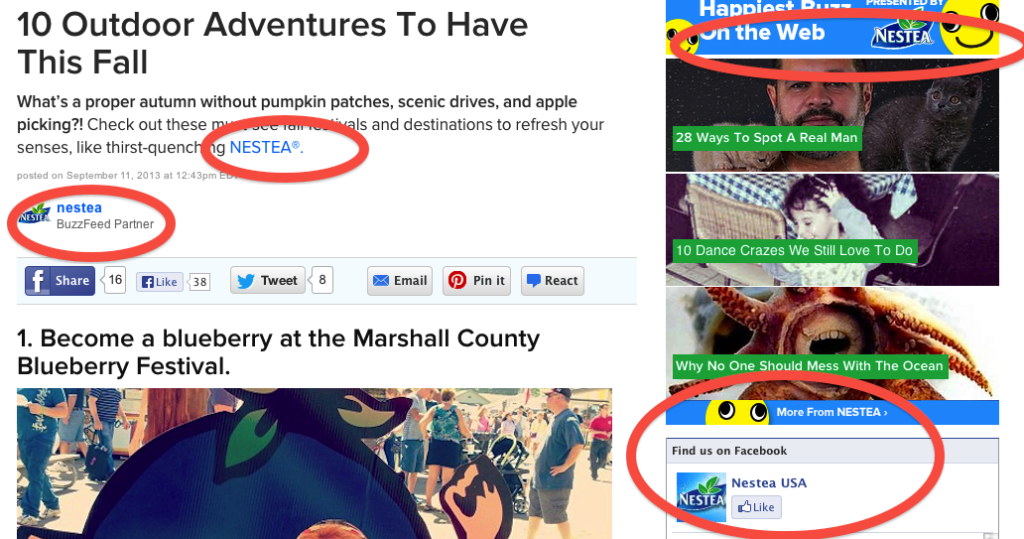Feds To Investigate The Fuzzy Line Between Advertising & Editorial Content
These sorts of semi-ads have been around for quite some time, especially in content genres generally considered as “journalism lite,” like celebrity and entertainment websites.
For example, a studio will let websites know it is looking for proposals on how each site can best promote a new movie. All the sites can run banner ads and skin the background with the film’s key art, but what often earns that studio’s ad dollars are the extra things one is willing to do editorially. That could mean running profiles of the movie’s stars, fashion and style pieces about the look of the film, posting exclusive trailers, etc.
Such content is not relegated to celebrity news and gossip sites. We are constantly being pitched stories and story ideas from a rainbow of industries and companies — ranging from gadgets to personal finance to food — all with the sole purpose of getting these brands out to the public. Most don’t overtly offer to pay and are simply hoping that free content will be sufficient reward, but some have actually wanted to discuss dollar amounts. We say no regardless.
Some sites, like Buzzfeed, have fully embraced the sponsored story model, regularly posting content that is associated with, and branded by, an advertiser. At least in the case above, it’s quite obvious that Nestea has anted up for the post.
However, these paid-for bits of content are not always marked as “sponsored,” especially if the editor of the site feels that readers have a genuine interest and it would have made a worthwhile story regardless. But the fact is that the publisher is still being paid to run that content, which makes it an ad.
And it’s in the advertiser’s best interest for that “story” to not be labeled as sponsored, for two reasons. First, many people see a label like “sponsored story” around a post and won’t click on it, much like they won’t click on a banner ad. Second, and more importantly, other site editors looking for content may pick up that story, thus giving the advertiser free eyeballs on their content. Most editors will not pick up a story if it’s labeled as an ad, but that same post without any disclaimer could be reposted and linked to numerous times.
So at what point does one cross the line from providing information that just happens to be bought and paid for into an area where the consumer is being misled and misinformed? That’s the basic question the Federal Trade Commission will be asking on Dec. 4 when it hosts a one-day workshop in which it will focus on the following topics:
What is the origin and purpose of the wall between regular content and advertising, and what challenges do publishers face in maintaining that wall in digital media, including in the mobile environment?
In what ways are paid messages integrated into, or presented as, regular content and in what contexts does this integration occur? How does it differ when paid messages are displayed within mobile apps and on smart phones and other mobile devices?
What business models support and facilitate the monetization and display of native or integrated advertisements? What entities control how these advertisements are presented to consumers?
How can ads effectively be differentiated from regular content, such as through the use of labels and visual cues? How can methods used to differentiate content as advertising be retained when paid messages are aggregated (for example, in search results) or re-transmitted through social media?
What does research show about how consumers notice and understand paid messages that are integrated into, or presented as, news, entertainment, or regular content? What does research show about whether the ways that consumers seek out, receive, and view content online influences their capacity to notice and understand these messages as paid content?
The FTC has also asked for comments on these questions from consumers. Anyone interested in providing feedback, can do so online at FTC.gov.
Want more consumer news? Visit our parent organization, Consumer Reports, for the latest on scams, recalls, and other consumer issues.


